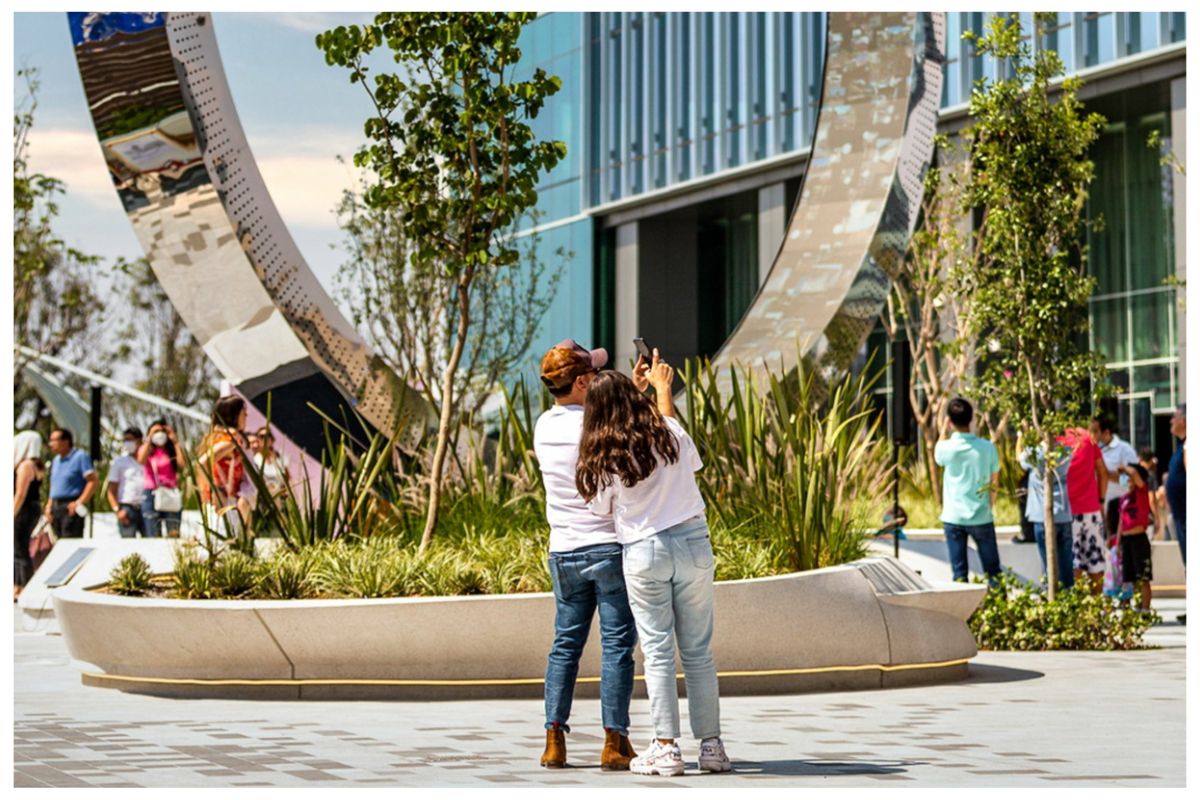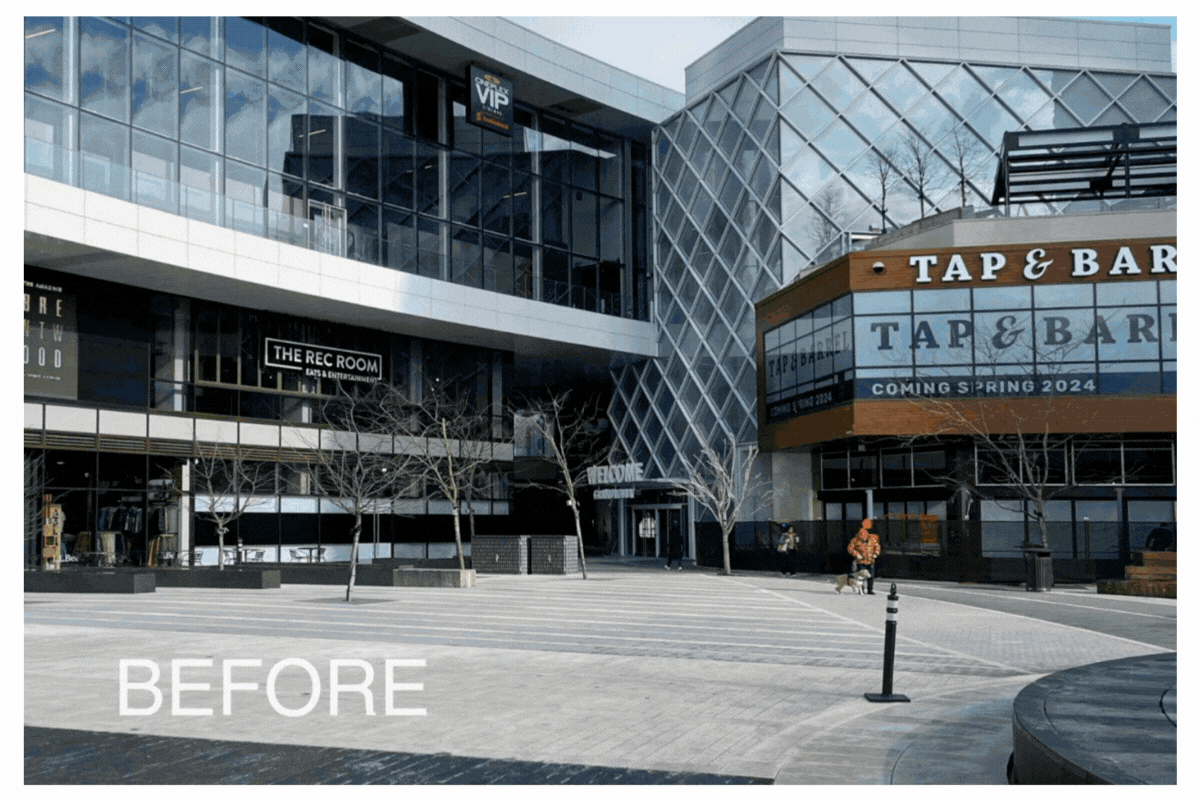Home /
Home / Expert Insights: Shaping the Future of Real Estate through the Power of Placemaking – with Sylvain Fortier
In a recent discussion with Philippe Demers, Founder & CEO of MASSIVart, Sylvain Fortier, a real estate expert, shared his invaluable insights on the evolving landscape of real estate, placemaking, and the value of creating spaces that resonate emotionally and culturally.
With over 35 years of experience, Fortier has held key leadership positions, including Chief Investment and Innovation Officer at Ivanhoé Cambridge, where he played a pivotal role in rethinking real estate through innovative and sustainable practices.
Fortier’s career has been marked by his forward-thinking approach to real estate investments, focusing on long-term value and strategic innovation. In this interview, he sheds light on how placemaking is shaping the future of the built environment and why investing in meaningful experiences is crucial for staying competitive in today’s market.
Below, we explore the key themes from the discussion.

“The Eye of Mexico” at Neuchâtel Cuadrante Polanco, Mexico City.
For Fortier, placemaking transcends traditional architecture. It’s about crafting spaces that go beyond mere functionality to create environments that evoke emotions and foster connections. Whether through art, design, or cultural elements, placemaking aims to build a sense of belonging, making people feel more connected to their surroundings.
In an era where the lines between work, leisure, and living are increasingly blurred, the ability to create spaces that resonate with the community is becoming a crucial differentiator. Real estate developers must embrace the idea that a building’s value lies not just in its physical structure but in the emotional experiences it offers.
Placemaking is not always easy to quantify in financial terms, and this is where Fortier’s perspective is invaluable. He explains that successful placemaking often requires intuition—trusting in the potential of a space, even when the immediate returns aren’t evident. Real estate, according to Fortier, is both an art and a science. While numbers and spreadsheets are essential, they can’t always capture the full value of creating vibrant, human-centred spaces.
Fortier believes that by focusing on the intangible experiences that people will have within a space, property developers can build environments that attract more people, retain tenants, and foster loyalty. To support this intuition-driven approach, a study we conducted in collaboration with TMU explored how placemaking can be measured in financial terms. The research confirms that placemaking isn’t just about aesthetics—it’s about making informed, strategic investments that generate long-term value.

PLAY on the Plaza at The Amazing Brentwood, Vancouver.
As the real estate market becomes more competitive, the role of placemaking is growing in importance. Fortier points out that properties investing in placemaking will have a distinct advantage over those that don’t. Whether it’s an office building, residential development, or retail space, creating environments that engage the senses and foster interaction is no longer just a bonus—it’s becoming essential.
Buildings that focus on placemaking will continue to attract tenants and visitors, outperforming those that rely solely on traditional designs. As the needs of tenants evolve, the real estate market is shifting toward spaces that prioritize human experiences, making placemaking an investment in both value and relevance.

ROYALMOUNT Public Art & Cultural Programming, Montreal.
Fortier emphasizes that the true value of real estate goes beyond its physical structure. It’s the activities, experiences, and connections that happen within a space that give it long-term value. By creating places where people want to be, developers can increase tenant satisfaction, retention, and overall demand for a property. Fortier’s view is that real estate’s value is determined by how well it serves the people who inhabit and use the space.
Through his insights, Sylvain Fortier underscores the growing importance of placemaking and innovation as key factors in the future of real estate. His experience shows that investing in sensory, emotional, and aesthetic experiences can enhance a property’s value in ways that go beyond the numbers.
By rethinking how spaces function and focusing on the experiences they offer, real estate developers can ensure long-term success. As the market shifts toward more human-centred spaces, placemaking is becoming not just an option but a necessity for those looking to stay ahead in the industry.
| Cookie | Duration | Description |
|---|---|---|
| cookielawinfo-checkbox-analytics | 11 months | This cookie is set by GDPR Cookie Consent plugin. The cookie is used to store the user consent for the cookies in the category "Analytics". |
| cookielawinfo-checkbox-functional | 11 months | The cookie is set by GDPR cookie consent to record the user consent for the cookies in the category "Functional". |
| cookielawinfo-checkbox-necessary | 11 months | This cookie is set by GDPR Cookie Consent plugin. The cookies is used to store the user consent for the cookies in the category "Necessary". |
| cookielawinfo-checkbox-others | 11 months | This cookie is set by GDPR Cookie Consent plugin. The cookie is used to store the user consent for the cookies in the category "Other. |
| cookielawinfo-checkbox-performance | 11 months | This cookie is set by GDPR Cookie Consent plugin. The cookie is used to store the user consent for the cookies in the category "Performance". |
| viewed_cookie_policy | 11 months | The cookie is set by the GDPR Cookie Consent plugin and is used to store whether or not user has consented to the use of cookies. It does not store any personal data. |